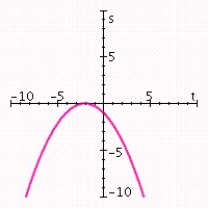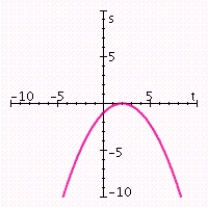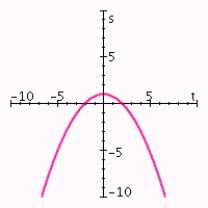Multiple Choice
Graph the quadratic function. Specify the vertex, axis of symmetry, maximum or minimum value, and intercepts.
A) vertex: (- 2, 0) ; axis of symmetry: t = - 2; maximum value: 0; t-intercept: - 2; s-intercept: -1. 
B) vertex: (- 2, 0) ; axis of symmetry: t = - 2; minimum value: 0; t-intercept: - 2; s-intercept: 1. 
C) vertex: (2, 0) ; axis of symmetry: t = 2; maximum value: 0; t-intercept: 2; s-intercept: -1. 
D) vertex: (0,1) ; axis of symmetry: t = 0; maximum value: 1; t-intercept: ; s-intercept: 1. 
E) vertex: (0, 2) ;axis of symmetry: t = 0; maximum value: 2; t-intercept: ;s-intercept: 2. 
Correct Answer:

Verified
Correct Answer:
Verified
Q15: Sketch the graph of the function and
Q16: Find all fixed points of the
Q17: Suppose that the revenue generated by
Q18: A triangle is inscribed in a
Q19: Sketch the graph of the rational
Q20: Sketch the graph of the function and
Q21: What is the largest possible area for
Q22: Sketch the graph of the rational
Q24: Two points A and B move
Q25: For the following figure, express the